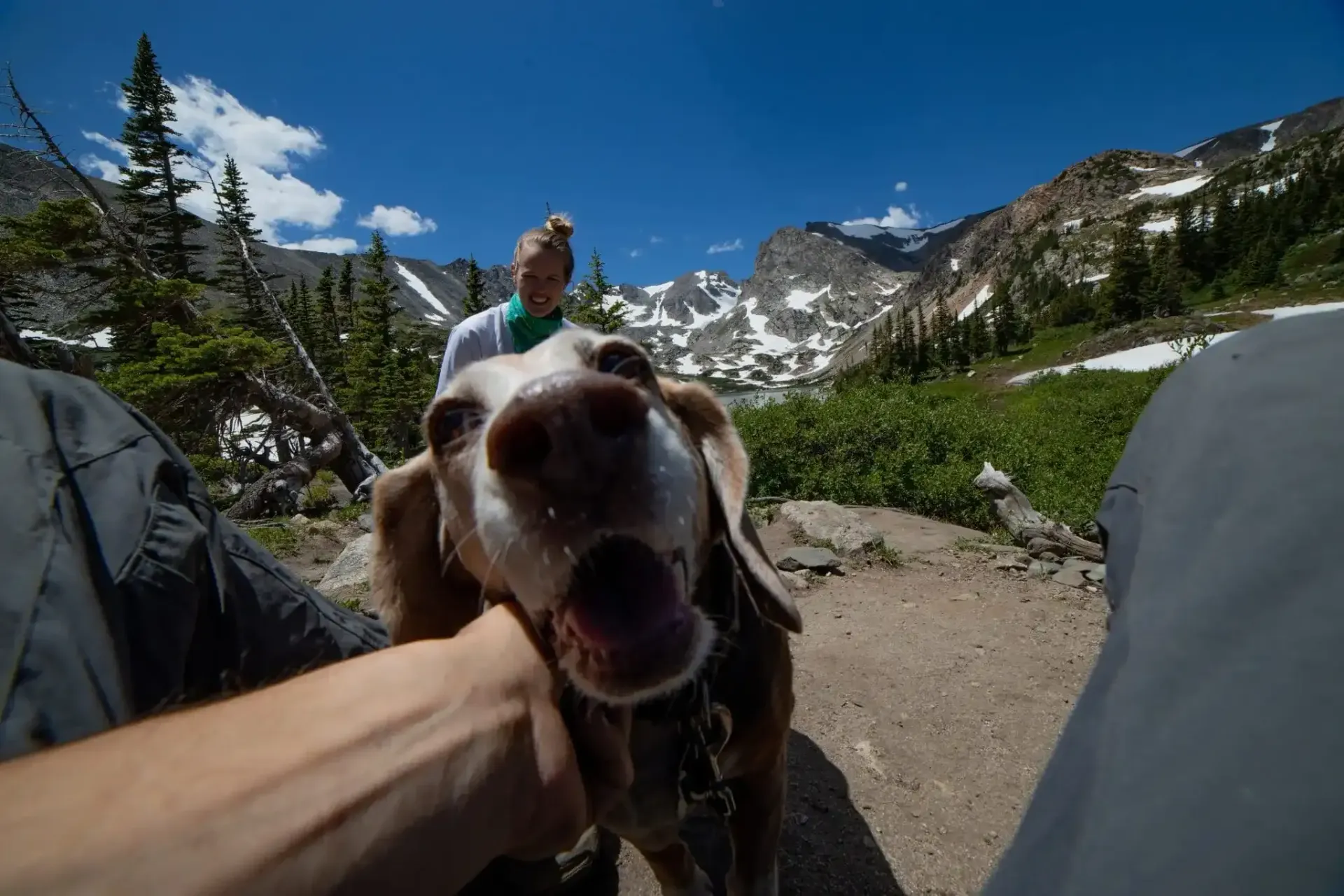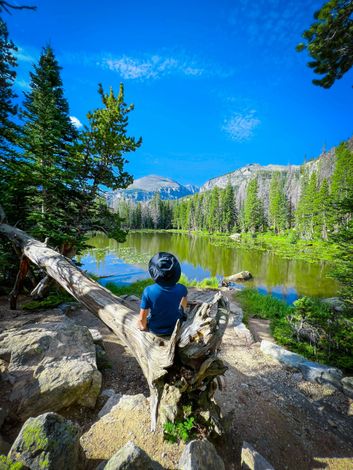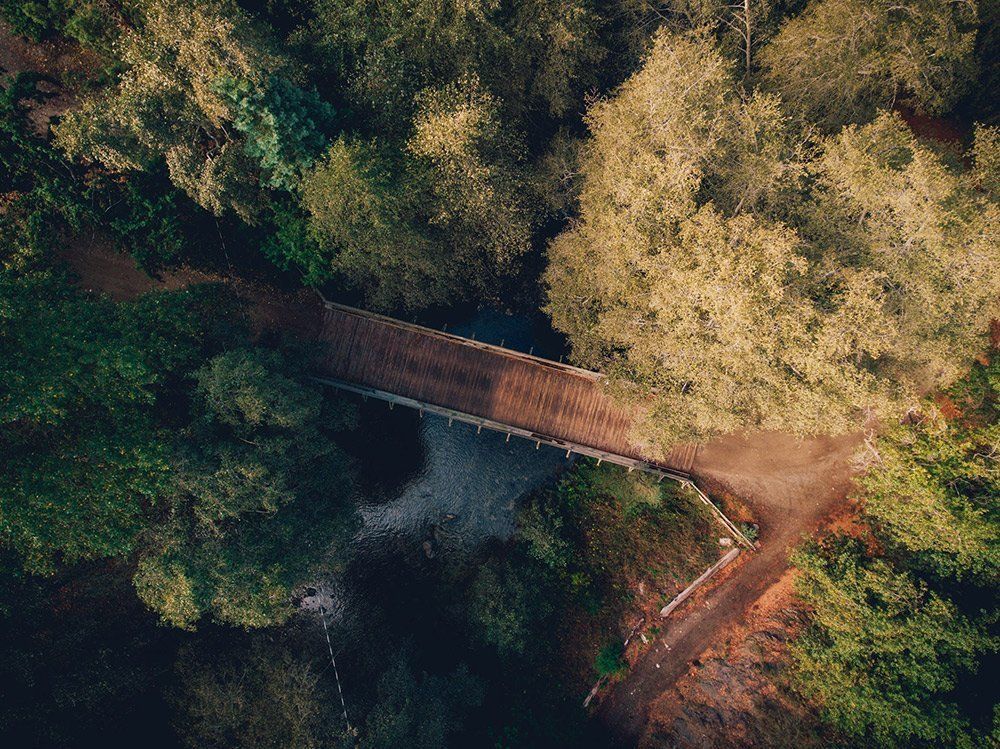By Pep Dekker
•
March 13, 2025
Estes Park is a hiker’s paradise, with a variety of different trails to choose from. Each trail offers something unique, with varying degrees of difficulty and lengths! However, if you’re heading to Estes Park with your dog, you may be wondering whether there are suitable hiking trails available. The answer to this question is yes – there definitely are! In this article, we will delve into the various dog-friendly trails you can find in Estes Park and highlight the differences between them so you can make the best choices on your trip. In this article, we will cover: The Best Dog Friendly Trails in Estes Park, including: Hermit Park Open Space Kruger Rock Trail Crosier Mountain Trail Round Mountain Trail Devils Backbone Nature Trail Horsetooth Mountain Open Space Bobcat Ridge Natural Area Sleepy Lion Trail Panorama Peak and The Notch Additional tips for hiking safely with your dog. Read on if you want to find out the best trails in Estes Park for you and your dog! Best Dog-Friendly Trails In and Around Estes Park As all trails within the Rocky Mountains are off-limits to canines , it may seem like visiting Estes Park with your dog might be a difficult feat. However, there are plenty of other trails available in Estes Park where your four-legged friend is more than welcome! Let’s take a look at the best dog-friendly trails, and what each has to offer. 1. Hermit Park Open Space Distance: Ranges, up to 5 miles Difficulty: Ranges, Easy to Difficult Elevation gain: Ranges, up to 900 ft Estimated hiking time: Ranges Highlights: Wildlife, Camping Hermit Park Open Space is located two miles southeast of Estes Park and offers a large range of hiking trails that are canine-friendly. This is a very popular hiking area, so try to get here outside of peak midday hours. The trails here are full of wildlife and there are cabins onsite, as well as camping facilities. Hermit Park Open Space also has horse riding and mountain biking trails. The park is open from March to December, with a permit required for entry. 2. Kruger Rock Trail Distance: 4 miles Difficulty: Moderate Elevation gain: 900 ft Estimated hiking time: 1 hour 15 minutes Highlights: Mountain Views Kruger Rock Trail can be found in Hermit Park Open Space and is open from March to December. Entrance to the hike is $10 for a day. This trail brings gorgeous views of the surrounding mountains, including Longs Peak, Twin Sisters, Flattop Mountain, and Hallett Peak. 3. Crosier Mountain Trail Distance: 10 miles Difficulty: Difficult Elevation gain: 3,250 ft Estimated hiking time: 4 hours Highlights: Cross-country skiing Crosier Mountain Trail is a more difficult track, located in Roosevelt National Park. Cross-country skiing is also possible on this trail, and dogs are allowed off-leash in some areas. Crosier Mountain Trail is open from March to September. 4. Round Mountain Trail Distance: 2 miles Difficulty: Moderate Elevation gain: 423 ft Estimated hiking time: 1 hour Highlights: Family Friendly Round Mountain Trail is a great trail for those looking for something not too challenging. The trail shouldn’t take more than an hour, and the incline isn’t too steep! The trail is popular and tends to be busy, so dogs must stay on a leash. The ideal time of the year to complete this trail is April to October. 5. Devils Backbone Nature Trail Distance: 4.3 miles Difficulty: Easy Elevation gain: 560 ft Estimated hiking time: 1 hour 50 minutes Highlights: Open all year round This is an easy, family-friendly trail that is also very popular and busy! Dogs must stay on a leash if taken on the trail. Horseback riding and mountain biking are also common on this trail, and one of the biggest draw cards is that it is open all year round. 6. Horsetooth Mountain Open Space Distance: Ranges, up to 3.25 miles Difficulty: Ranges, Easy to Difficult Elevation gain: Ranges, up to 1,600 ft Estimated hiking time: Ranges, up to 1 hour Highlights: Horsetooth falls Horsetooth Mountain Open Space is open all year round and contains a large range of diverse trails. This area is known for the spectacular horsetooth falls, and the front range views. Horseback riding and mountain biking are also possible. Entrance requires a permit. 7. Bobcat Ridge Natural Area Distance: Ranges, up to 10 miles Difficulty: Ranges, Easy to Difficult Elevation gain: Ranges, up to 1,500 ft Estimated hiking time: Ranges, up to 4 hours 45 minutes Highlights: Wildlife, red rock cliffs Bobcat Ridge Natural Area has something for everyone with quick easy hikes alongside trails for the more daring and experienced. Highlights of the trail are the abundance of wildlife, including elk, turkey, and mountain lions. There is also no entrance fee to visit! 8. Sleepy Lion Trail Distance: 2 miles Difficulty: Moderate Elevation gain: 650 ft Estimated hiking time: 1 hour Highlights: Plentiful Wildflowers Sleepy Lion Trail is a short hike with moderate difficulty. The trails boast plenty of forest, as well as a variety of wildflowers. 9. Panorama Peak and The Notch Distance: 7.3 miles Difficulty: Moderate Elevation gain: 1,400 ft Estimated hiking time: 3 hours 30 minutes Highlights: Stunning Natural Beauty For those wanting a longer hike, the Panorama Peak trail is a great option. This trail is located in Roosevelt National Park and is known for its stunning natural beauty. Dogs must remain on a leash, but the trail is open all year round. Tips for Hiking With Your Dog If you’re heading out on a trail with your furry friend, there are some must-dos before you go. Let’s take a look at some great tips to ensure a hassle-free day hike! Check trail regulations beforehand: Before heading out on the trail, you’ll want to ensure you look up the specific requirements for your trail. Some trails require dogs on leashes, while some trails have certain areas of the trail where dogs are allowed off-leash. Many trails also require permits or entry fees. Making sure you are aware of these requirements will keep you free of any unexpected surprises when you get there! Keep your dog on a leash or under voice control: It’s important that when you’re out on a trail you have your dog on a leash as there are likely other people around who you will encounter. If the trail allows you to have your dog off its leash, it’s essential that your dog still obey your commands! Bring enough water and snacks for the both of you: While some trails have water and facilities available, it’s best practice to bring all the supplies you will need so that you don’t get caught out. This goes for your dog as well as yourself! Pack waste bags and clean up after your dog : When you’re hiking these stunning trails make sure you respect the areas. This includes cleaning up any messes that your dog leaves behind. Bring plenty of waste bags to be prepared! Monitor your dog for signs of overheating or fatigue: It’s important that you keep yourself and your dog well-hydrated while hiking. Stay vigilant of any signs of dehydration or fatigue in your dog! Some of these signs include panting, dry nose, drooling, warm skin, and rapid heart rate. If the dehydration is more severe , your dog may start vomiting or even lay down and become unresponsive. Protect your dog’s paws from rough terrains with booties : A great way you can protect your dog is by investing in some dog booties ! These protect dogs’ paws from the hot and cold, as well as from rough terrain. Ensure your dog’s vaccinations and tick preventatives are up to date: Before you embark on your hike, you’ll also need to make sure all of your dog’s vaccinations are up to date. It may be worth visiting the vet to ensure your dog is up-to-date and prepared for the trail! Respect wildlife and other hikers: It goes without saying that it’s vital to ensure your dog does not disrupt the enjoyment of other hikers or cause any problems for the local wildlife. Train your dog on trail etiquette and commands : To ensure you can make sure your dog behaves itself, you’ll want to make sure your dog will obey your commands and knows how to behave on trails where they will encounter other hikers (and likely other dogs). Happy hiking!















